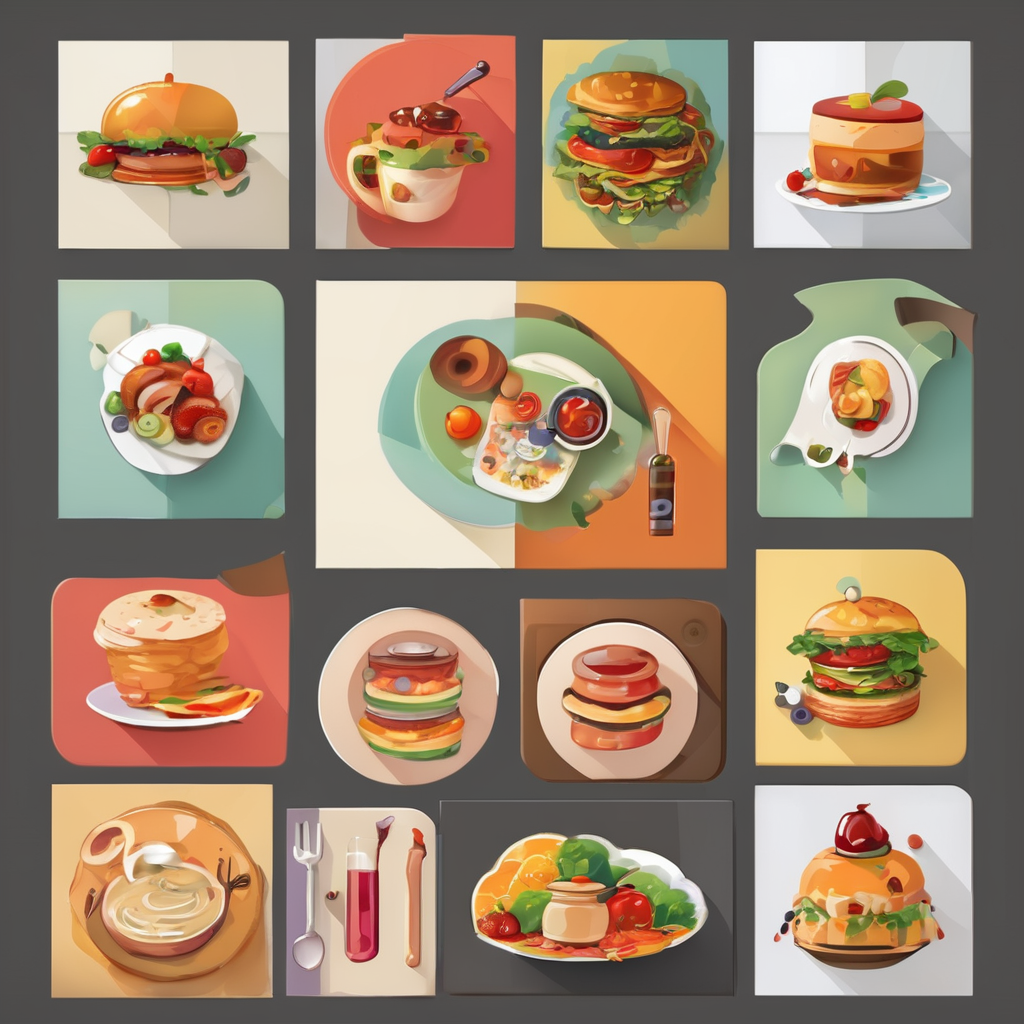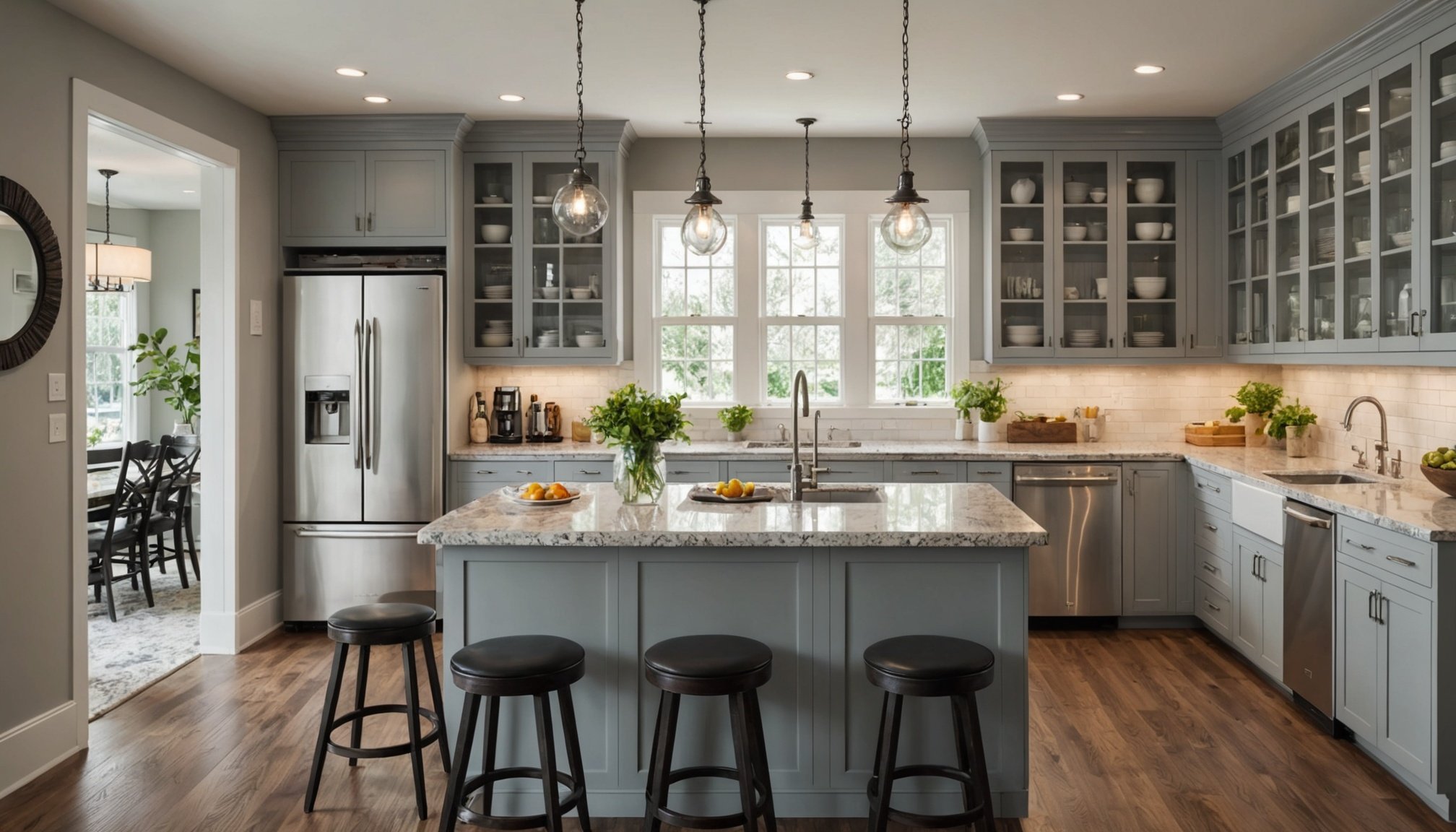Understanding the Impact of Kitchen Design on Mental Wellness
Creating a kitchen that supports mental wellness involves careful attention to several elements that influence one’s emotional state. An inviting layout can significantly affect one’s mood, transforming a kitchen into a haven of peace. The arrangement of space impacts mental wellness by promoting efficient movement and reducing clutter-induced stress. A well-organized kitchen encourages a serene environment, crucial for optimal emotional well-being.
Psychological Effects of Colors and Materials
Colors and materials play a pivotal role in shaping a peaceful environment. Soft hues and natural textures can evoke tranquillity; for instance, greens and blues are associated with calmness, while wood and stone bring warmth and comfort. Using materials with emotional well-being in mind helps establish harmony within the environment. Selecting colors and materials that align with nature can promote a sense of peace and relaxation.
Also to discover : Designing the Ultimate Vegan Kitchen: Key Tips for Creating a Plant-Based Paradise
Sensory-Friendly Cooking Environments
Incorporating sensory aspects adds an underlying layer to kitchen design aimed at enhancing emotional equilibrium. Employing sensory-friendly textures and finishes not only adds aesthetic value but also contributes to an enriching cooking experience. Thoughtfully choosing materials that are pleasing to the touch and eye is essential in crafting a kitchen conducive to mental wellness.
Key Design Elements for a Peaceful Kitchen
Creating a harmonious kitchen begins with thoughtful kitchen design elements. These components are crucial for establishing a sense of tranquility and functionality within the space. A well-rounded design considers the interplay of color schemes, materials, and layout to foster a peaceful environment.
Also to see : Ultimate Guide to Multi-Zone Kitchen Design: Crafting Spaces for Diverse Culinary Adventures
Color Schemes and Their Effects
A soothing color palette plays a significant role in evoking calmness. Consider using soft tones like pastels or muted greys for walls and cabinetry to enhance tranquility. Accent colors, such as warm yellows or muted terracotta, can be strategically used to uplift the ambiance without disrupting the serenity.
Functional Layout for Relaxation
Designing an ergonomic kitchen space is vital for relaxation. Focus on creating efficient workflows that reduce movement stress and promote ease. Simple tips, like placing frequently used items within arm’s reach, contribute to a stress-free cooking experience, fostering emotional well-being.
Use of Natural Materials
Integrating materials like wood and stone creates a warm and organic atmosphere, ideal for reducing stress. These elements, when combined thoughtfully, provide a comforting cocoon effect. Selecting materials with calming textures enhances the space, offering a tranquil escape from the bustle of daily life.
Enhancing Natural Light and Lighting Fixtures
Natural light in kitchens is essential for creating a calming environment that boosts mood and well-being. Strategies to maximize this include using large windows, skylights, and strategic placement of reflective surfaces to distribute light. These techniques can dramatically improve the kitchen ambiance, making it feel more open and inviting.
Selecting the right lighting fixtures is crucial in complementing natural light. Ambient lighting should be soft and adjustable, catering to different activities and moods. Look for fixtures with dimmable switches to offer flexibility. Consider pendant lights for areas such as breakfast bars, as they add a touch of elegance and focus light where needed.
Moreover, combining multiple light sources can help create a layered effect, enhancing both functionality and warmth. Task lighting under cabinets can assist with cooking, whilst accent lights can highlight features or artwork, further enriching the space. The blend of natural and artificial lighting enables the kitchen to transition seamlessly from day to night, maintaining the tranquil atmosphere desired for emotional well-being.
A well-considered lighting design can significantly foster a peaceful environment in your kitchen, ensuring it remains a pleasant and functional space.
Organizing for Calmness and Efficiency
Achieving a sense of calmness and efficiency in the kitchen involves strategic organization. An orderly kitchen not only enhances the space’s functionality but also contributes significantly to mental wellness. Let’s delve into some effective strategies to transform your kitchen into a serene haven.
Decluttering Strategies
Implementing practical approaches to minimize clutter is crucial. The aim is to utilise minimalistic design elements, which can have a profound impact on peace of mind. Start by categorising kitchen items based on their frequency of use. Items used daily should be easily accessible, while those less frequently needed can be stored out of sight. Regularly assessing the need for kitchen tools mirrors the process of mental decluttering.
Smart Storage Solutions
Smart storage solutions can play a pivotal role in maintaining an organized kitchen. Consider integrating pull-out drawers or lazy Susans to maximise space. Clear containers and labelling systems can help create a cohesive look, adding a sense of tranquillity. These methods not only improve efficiency but also ensure a calmer atmosphere by reducing visual clutter. Maintaining an organized kitchen space encourages an environment conducive to emotional well-being and a peaceful mindset.
Incorporating Elements of Nature
Emphasizing biophilic design in kitchens can boost emotional well-being by bringing elements of nature indoors. Integrating indoor plants in the kitchen not only enhances aesthetic appeal but also promotes a calming atmosphere. Choose low-maintenance plants like succulents or pothos that thrive indoors to maintain a visually appealing and serene environment.
Including natural elements, such as stone countertops or wooden accents, further strengthens the connection with nature. These elements evoke a sense of organic tranquillity, contributing to a peaceful environment. Additionally, positioning plants strategically near windows optimizes natural light, enhancing their growth and reviving the space with freshness and vitality.
Incorporating biophilic design principles can improve air quality and reduce stress levels. This approach encourages using materials and textures that mimic natural surroundings, providing a comforting retreat within the home. Consider adding vertical gardens for a modern touch, or place herbs within easy reach for an added splash of greenery and functionality.
Incorporating elements of nature in kitchen design creates an inviting, harmonious environment that nurtures both the mind and spirit through a blend of beauty and practicality.
Calming Scents and their Role
Integrating aromatherapy in kitchens can substantially enhance emotional well-being by creating a soothing atmosphere. Selecting calming scents like lavender, chamomile, and citrus can promote relaxation and complement the kitchen’s ambiance. These essential oils are known for their stress-relieving properties, making them ideal for a calming environment.
Selecting Appropriate Scents
Incorporating scents effectively without overwhelming the space requires careful selection. Essential oils such as lavender and eucalyptus not only invoke tranquillity but also refresh the kitchen with natural aromas. Using oils sparingly ensures the fragrance remains subtle yet impactful.
Methods of Incorporating Scents
Incorporate scents using diffusers or scented candles placed strategically around the kitchen. Consider adding a diffuser near the cooking area or on a windowsill to circulate aromas gently without overpowering. Scented candles can also add warmth and charm, enhancing the space’s aesthetic appeal. Additionally, consider using natural air purifiers like herbal bundles or potpourri to keep the fragrance light while maintaining a fresh and inviting kitchen ambiance. Combining these methods creates a balanced environment that nurtures serenity and enhances wellness in the kitchen.
Expert Insights and Resources
Designing a kitchen that enhances mental wellness requires expert guidance and resources. Consulting with professional designers focused on wellness design can provide comprehensive insights. They often stress the importance of balancing functionality with serene aesthetics to create emotionally enriching spaces.
Consider exploring design workshops or community resources that focus on holistic kitchen design. These platforms can offer practical, hands-on advice and support your journey towards creating a calming kitchen environment. In addition, reading materials and online resources are invaluable in broadening your understanding of kitchen design principles centered on emotional well-being.
Renowned interior designers frequently emphasize choosing elements that contribute to a peaceful environment. For example, incorporating well-thought-out color schemes and natural materials is often recommended. This expert advice is crucial in creating a harmonious space that promotes tranquility.
By leveraging these expert resources, you can make informed decisions in your kitchen design, leading to a space that nurtures both mind and spirit. Adopting these informed strategies ensures a kitchen environment that not only functions efficiently but also supports your mental and emotional health.

